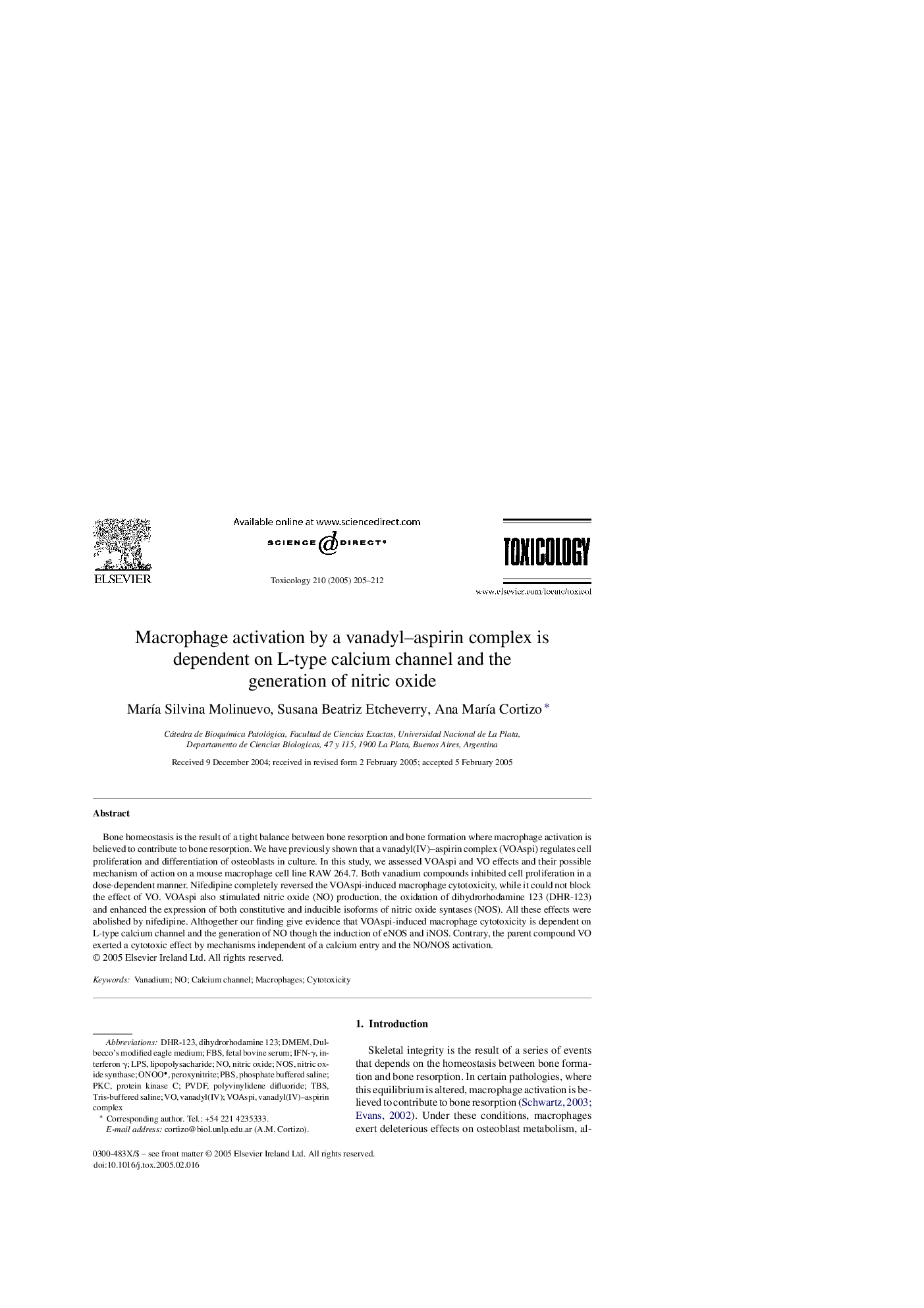| Article ID | Journal | Published Year | Pages | File Type |
|---|---|---|---|---|
| 9034983 | Toxicology | 2005 | 8 Pages |
Abstract
Bone homeostasis is the result of a tight balance between bone resorption and bone formation where macrophage activation is believed to contribute to bone resorption. We have previously shown that a vanadyl(IV)-aspirin complex (VOAspi) regulates cell proliferation and differentiation of osteoblasts in culture. In this study, we assessed VOAspi and VO effects and their possible mechanism of action on a mouse macrophage cell line RAW 264.7. Both vanadium compounds inhibited cell proliferation in a dose-dependent manner. Nifedipine completely reversed the VOAspi-induced macrophage cytotoxicity, while it could not block the effect of VO. VOAspi also stimulated nitric oxide (NO) production, the oxidation of dihydrorhodamine 123 (DHR-123) and enhanced the expression of both constitutive and inducible isoforms of nitric oxide syntases (NOS). All these effects were abolished by nifedipine. Althogether our finding give evidence that VOAspi-induced macrophage cytotoxicity is dependent on L-type calcium channel and the generation of NO though the induction of eNOS and iNOS. Contrary, the parent compound VO exerted a cytotoxic effect by mechanisms independent of a calcium entry and the NO/NOS activation.
Keywords
PVDFPKCIFN-γLipopolysacharideNOSTBSDHR-123FBSDMEMLPSPBSDulbecco's modified Eagle MediumONOOinterferon γTris-buffered salinepolyvinylidene difluoridedihydrorhodamine 123fetal bovine serumCytotoxicityPhosphate buffered salineMacrophagesNitric oxidenitric oxide synthaseVanadiumProtein kinase CPeroxynitriteCalcium channel
Related Topics
Life Sciences
Environmental Science
Health, Toxicology and Mutagenesis
Authors
MarÃa Silvina Molinuevo, Susana Beatriz Etcheverry, Ana MarÃa Cortizo,
